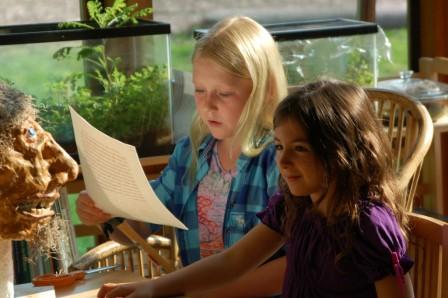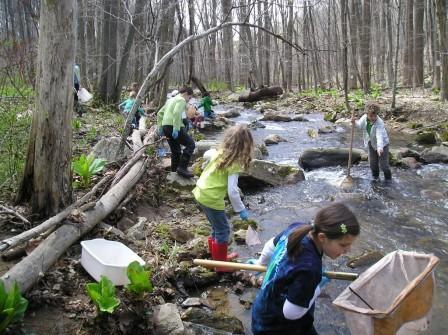 The Willow School in Gladstone, New Jersey, dubs itself “The Little Green Schoolhouse.” That’s because Willow is one of the first schools in the nation to adopt sustainability as an integrated concept. The school’s progressive commitment to sustainability, both on its campus and in its curriculum, earned it a rating by the National Geographic’s “Green Guide” as the nation’s second greenest school several years ago.
The Willow School in Gladstone, New Jersey, dubs itself “The Little Green Schoolhouse.” That’s because Willow is one of the first schools in the nation to adopt sustainability as an integrated concept. The school’s progressive commitment to sustainability, both on its campus and in its curriculum, earned it a rating by the National Geographic’s “Green Guide” as the nation’s second greenest school several years ago.
A small, independent, coeducational day school, the Willow School is committed to fostering academic excellence, a passion for learning, and the development of an ethical approach to all relationships—including students’ relationship to the natural world.
 The school is ideally suited for exploring, experiencing and learning from nature. The 34-acre campus allows for on-site studies of forests, wetlands, water quality and groundwater systems, and the changes that come with the seasons.
The school is ideally suited for exploring, experiencing and learning from nature. The 34-acre campus allows for on-site studies of forests, wetlands, water quality and groundwater systems, and the changes that come with the seasons.
Willow encourages all of its students to work toward making their communities healthier and more just, to appreciate the beauty and wonders of nature, and to relate to their natural environment “as stewards rather than conquerors.” Its academic curriculum is designed to further those goals, and was cited as one of the factors that helped the school become one of the U.S. Department of Education’s Green Ribbon Schools in 2012.
Energy Investigation
The school’s barn, a multi-use building, is LEED Platinum-certified by the U.S. Green Building Council, and uses 70% less energy than would an identical building constructed to meet minimum code requirements. The Barn generates 37% of its own electricity using renewable photovoltaic technology. Super-insulated walls and ceilings, high-performance windows, high-efficiency heating and cooling systems, and the maximum use of daylight rather than artificial light help maximize energy savings.
Water Investigation
Reducing water use also is a priority for the school. Collected rainwater is used to flush all toilets, and bathrooms feature low-flow faucets. Drought-resistant landscaping on the school grounds features native trees and plants, and requires no irrigation.
In this environment, it’s no wonder the school’s students are encouraged, from the earliest grades, to play an active role in the conservation curriculum, with the school’s garden and recycling program sharing the spotlight.
School Site Investigation
Every grade has a garden-centered project tied to studies in science, history, and social studies. For example, 2nd graders create a Lenape Garden, growing the ancient “sister” crops of corn, beans and squash. Fifth-graders use the garden as a point of reference to compare it to the ancient agricultural societies about which they are learning. At the end of the year, 8th graders lead the entire school in a Harvest Soup celebration, inviting the community to share the year’s garden crop.
Waste & Recycling Investigation
In addition to recycling paper, plastic, and other conventional materials, The Willow School takes steps to keep non-recyclable items out of landfills. Kindergarten students collect hundreds of pounds of bottle caps, which corporate partner Aveda melts down to create new product packaging. Third-graders collect items like spent cell phones, yogurt cups, juice pouches and other non-recyclable items. These are shipped to TerraCycle, which pays a few cents for each item collected, and then upcycles the items into new products.
Proximity to the New Jersey coast also offers environmental learning opportunities. During the year, every student has the opportunity to plant a stalk of beach grass and nurture it in the classroom for several weeks. The plants are used to teach the benefits these grasses bring to the landscape and wildlife of the state’s coastal ecosystem. When the grass plants are hardy enough, students travel to the shore to plant the grasses.


